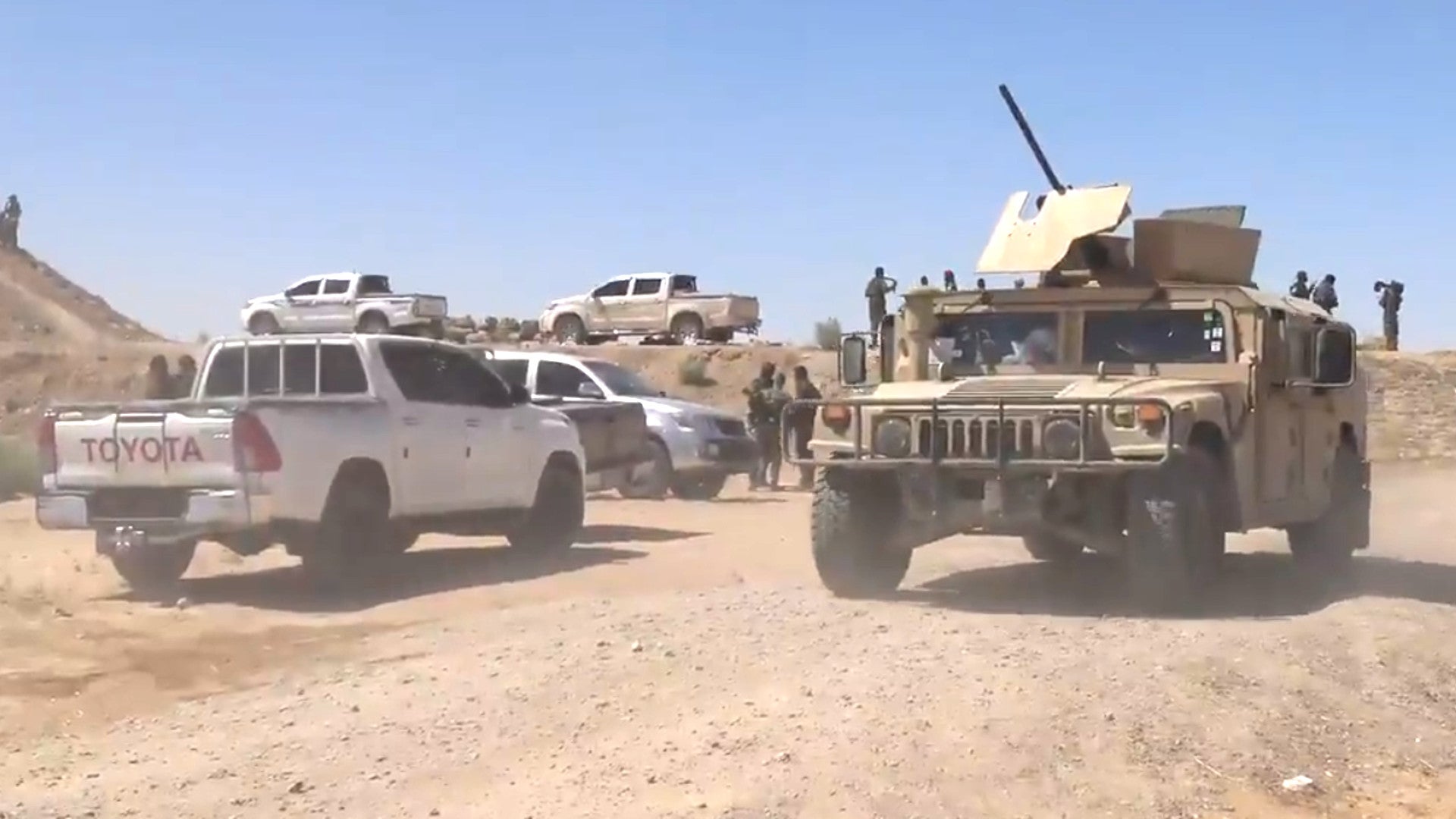As the threat of ISIS continues to recede in Syria, there’s a scramble on between U.S.-backed and pro-Syrian government factions to secure control of the country’s eastern desert regions ahead of whatever conflict or negotiated settlement comes next. At the same time, the Syrian regime of dictator Bashar Al Assad, along with his Russian and Iranian allies and their proxies, continue to consolidate their respective positions to the west.
On Sept. 9, 2017, the top U.S. military command leading the fight against ISIS, Combined Joint Task Force-Operation Inherent Resolve (CJTF-OIR), announced that the American-backed Syrian Arab Coalition (SAC), a component of the larger Syrian Democratic Forces (SDF), had launched its long planned offensive into Deir ez-Zor governorate, also written Dayr Az Zawr. This came after the Assad regime and its Russian partners declared they had broken the siege of the province’s capital of the same name and were continuing to clear the terrorists from the surrounding area on Sept. 5, 2017. The terrorists had surrounded the strategic city since April 2014.
Flashpoint in Dei ez-Zor
“The multi-ethnic SAC is a battle-tested, proven partner force in the Coalition’s fight to defeat ISIS in northern Syria,” CJTF-OIR said in their official statement. “Coalition forces will support the SAC during the Khabur River valley offensive as part of their ‘advise and assist’ mission, providing equipment, training, intelligence and logistics support, precision fires and battlefield advice.”
The press release made no mention of the nearby Syrian or Russian forces, or their associated militias, or any potential risks of the SAC and their coalition advisers coming into contact with these parties. An official correction, which came along with a second Email highlighting the change in language, effectively underscored the complexities and potential dangers of having the two separate and distinct operations uncoordinated in such close proximity.
“The draft indicated that anti-Syrian regime forces are marching to Dawyr Az Zawyr,” U.S. Army Colonel Thomas Veale, CJTF-OIR’s director of public affairs, explained, while using yet another different spelling of the governorate’s name. “This is not the case. What our partners are calling ‘Operation Jazeera Storm’ is, in fact, an operation to clear the Khabur River valley north of Dawyr Az Zawyr, and not into Dawyr Az Zawyr itself.”
This is not a small issue. The United States insists its only interest in Syria is defeating ISIS and that it is only supporting local groups in this pursuit. It has severed ties or otherwise distanced itself from factions that have disregarded this mission in favor of attacking the regime or other groups in Syria, including Turkish forces and their allied militias.
The official message seems clear, that the U.S. military has ceded the actual city of Deir ez-Zor to the Syrian government. American officials claim to have assurances from the SAC that after it defeats ISIS in areas north of the provincial capital, the group will turn over control to local civilian authorities, but there was no indication if these councils would be loyal to the central government in Damascus, the SAC, or other independent actors.
“Once the Khabur River valley is cleared of ISIS, the SAC states the region will be turned over to representative bodies of local civilians who will then oversee security and governance as with Tabqa and Manbij,” CJTF-OIR’s revised press release explained. “The SAC is operating along two corridors, and the local citizens and non-combatants in those areas are evacuating northward to SAC-controlled safe areas.”
Through its on again-off again hotline with the Russians, the U.S.-led coalition has working to “deconflict” the situation before any dangerous mistakes occur. As ISIS position weakens, it may be increasingly difficult to keep the SAC and other U.S.-support factions focused, too.
Conflicting agendas
Both the Pentagon and the State Department have stressed that the United States has little interest in Syria beyond defeating the terrorists, but neither has elaborated on what will happen to the local groups it has been working with, many of whom have significant grievances with Assad and his allies, in the long term. It’s very possible that the Pentagon was motivated in its decision to let the SAC move into Deir ez-Zor, something it had just weeks earlier suggested was off the table until the SDF had liberated the city of Raqqa to the north, in no small part because of concerns that the rebels might decide to move in on their own, as well as a desire to check the rapid advances of Assad and his benefactors.
As it stands now, the U.S. military has communicated to the Russians that their forces, along with the Syrians and the Iranians, need to stay west of the Euphrates River and the SAC keep to other bank. But it looks as if the two sides will move right to the edge of this boundary, well within striking distance of each other, raising concerns about mistake and miscalculations by both coalitions.

“As most of you know, there is a deconfliction line that runs south of Tabqa and goes all the way across – somewhat parallel – irregularly, but parallel to the Euphrates River, so that we can maintain our focus, both the Russians and the regime and the coalition and the SDF, on defeating ISIS,” U.S. Army Colonel Ryan Dillon explained to reporters during a press conference on Sept. 7, 2017. “We will continue to deconflict and, as necessary and as required, we’ll continue to draw a – that line, if you will, further on down the Middle Euphrates River Valley, if necessary.”
However, in the past, we’ve seen that the message doesn’t always filter down to Iranian-backed pro-Assad militias, which has led to violent skirmishes in the past near the town of At Tanf. There’s no indication that the Syrian government has acquiesced to the idea that it cannot continue to exercise its sovereignty all the way to the border with Iraq, regardless of the presence of American troops, which it says are illegally operating in the country anyways.
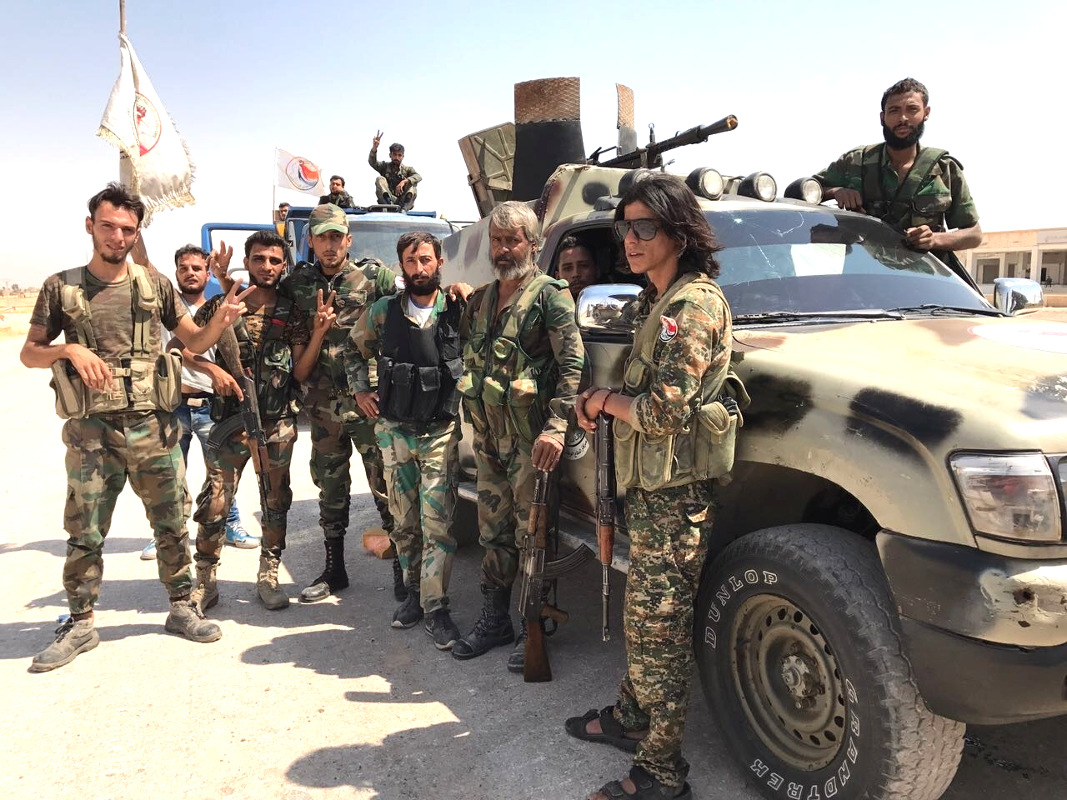
The convoy in the desert
There’s also a limit to what the United States can reasonably do if it truly intends to adhere to its stated policy of focusing exclusively on ISIS in Syria. Nowhere has this has been more apparent than with regards to a beleaguered convoy of ISIS fighters and their families, which is presently stranded in the desert west of the city of Deir ez-Zor.
This bizarre situation is a microcosm of the increasing absurdity of Syria’s multi-faceted conflict. In August 2017, Iranian-backed Lebanese terrorist group Hezbollah cut a deal with ISIS fighters near the border with Lebanon that allowed them safe passage east in exchange for the bodies of members of the group, as well as Lebanese troops, who had gotten captured during fighting in the area.
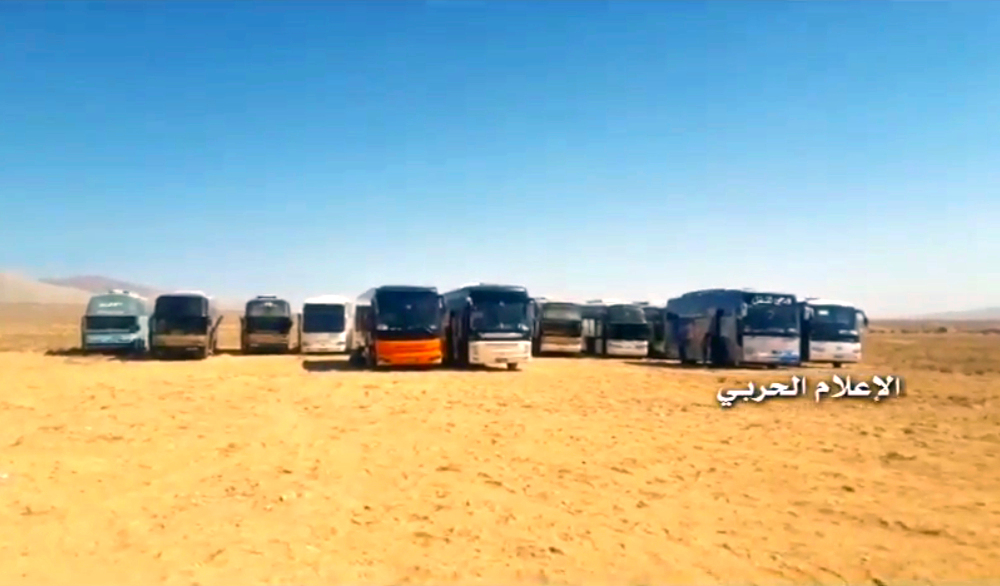
The arrangement had the approval of the Assad government and the tacit support of the Lebanese government, but was rejected out of hand by the U.S.-led coalition – which includes Lebanon. American aircraft promptly bombed roads and bridges to hamper the convoy’s progress. Unable to attack the buses themselves for fear of killing innocent women and children, the United States has instead monitored its status and attacked any ISIS fighters that attempt to make contact with it. Someone has been supplying food and water to the stranded travelers, but CJTF-OIR said it was not directly involved in this humanitarian effort even as it allowed the care packages to reach the convoy.
The U.S. government then received criticism for stepping aside and temporarily stopping its surveillance of the convoy as a Syrian government military contingent, supported by Russian forces, including aircraft, moved through the area, bypassing the ISIS members on their way to Deir ez-Zor. Realistically, it could have been no other way, since the American-led coalition has stressed its unwillingness to challenge or engage the regime directly for any other reason than immediate self defense.
All of this only underscores the increasing difficulty the United States is having operating in Syria as it tries to crush ISIS, but stay removed from the country’s ongoing civil war. The American-backed coalition seems to have all but conceded that Assad has solidified his position in the eastern coastal regions with the help of Russia and the Iran.
Sensing the changing nature of the situation, U.S. government partners in the region have increasingly begun to exploring working with Assad, or at least his foreign allies. In August 2017, Russian troops even moved into the northeastern town of Afrin after striking a deal with the Kurdish People’s Protection Units, or YPG, who also form the core of the U.S.-supported SDF. Turkey, who sees the YPG as a dangerous terrorist group, has also been coordinating with the Kremlin about potential deconfliction zones in northern Syria.
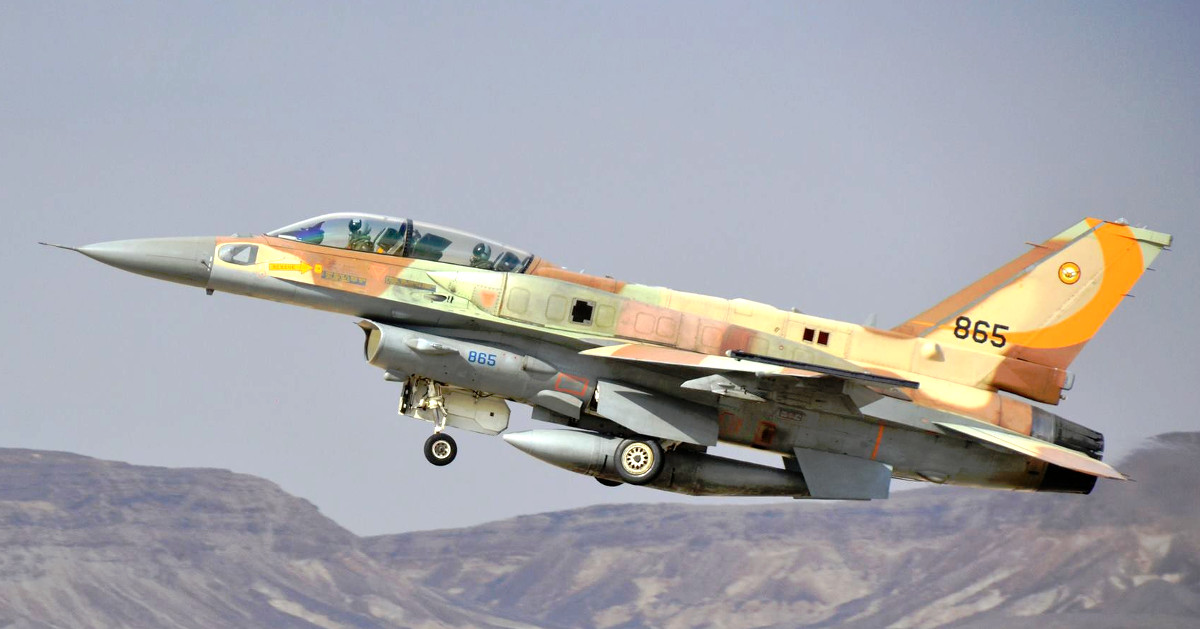
Israel’s role
Israel, which is concerned about Iran’s increased influence in the region, has been the only one to consistently challenge the developments in Syria’s more stable eastern provinces. Earlier in September 2017, Israeli aircraft reportedly attacked the Syrian Scientific Studies and Researchers Center in Masyaf, as well as nearby warehouses containing short-range ballistic missiles.
This entity is responsible for Syria’s chemical and ballistic missile programs, as well as other advanced military research. The attack, which Israel has refused to confirm it conducted, was actually on the 10 year anniversary of a similar Israeli strike on a suspected Syrian nuclear reactor in 2007.
“The strike reported last night is not routine,” retired Israeli Air Force General Amos Yadlin, who previously served as the head of the Israel Defense Force’s Military Intelligence Directorate, wrote on Twitter after the attack. He dismissed the idea that anyone should see the operation as an extension of earlier Israeli interventions during the Syrian civil war, which mainly sought to disrupt arms deliveries to Hezbollah.
“It targeted a Syrian military-scientific center for the development and manufacture of, among other things, precision missiles, which will have a significant role in the next round of conflict,” he continued. “The attack sent 3 important messages: 1. Israel won’t allow for empowerment and production of strategic arms. 2. Israel intends to enforce its redlines despite the fact that the great powers are ignoring them. 3. The presence of Russian air defense does not prevent airstrikes attributed to Israel.”
The last two points are especially important. U.S. President Barack Obama has received widespread criticism for threatening to intervene if Assad crossed the “red line” and continued to use of chemical weapons against his own people. He eventually backed down from that position, ostensibly in order not to upset parallel negotiations with Iran over its controversial nuclear program.
Separately, in August 2017, Russia announced it had formally linked its considerable air defenses in Syria with those of the country’s government. Many, including us at The War Zone, interpreted this as an attempt to establish deterrent to any future international interventions against Assad.
For their parts, Syria and Russia appear to have contented themselves to lodge formal protests and criticize Israel’s actions, without any apparent intent to retaliate in the near term. That being said, the Russian contingent in the country did expand air defense capabilities yet again on Sept. 13, 2017, with the deployment of advanced MiG-29SMT fighter jets to its base in Latakia governorate.
The MiG-29SMTs join an already capable force that includes Su-27SM3, Su-30, Su-35S Flanker fighter variants, Su-34 Fullback multi-role combat aircraft, as well as Su-24 Fencer and Su-25 Frogfoot ground attack aircraft. On the ground, Russian troops operate an array of additional defenses, including the S-300 and S-400 long range surface-to-air missiles, the Pantsir-S1 air defense system, and associated radars.
In addition to their functional purpose, the MiG-29SMTs add to to an already diverse mix of aircraft that is in line with Russia’s publicly stated desire to show off as much of its top of the line military hardware in action as possible. Vladimir Putin has described the Syrian conflict as a “priceless” testing ground for tactics and equipment.
Still, beyond just just being an arms show, having all of these assets in place will definitely be an important factor for the Syrians and their allies as the conflict evolves into its next phase, whatever that is. How well they deter outside attacks, including those from Israel, will also be a significant indication of things to come, as Yadlin noted.
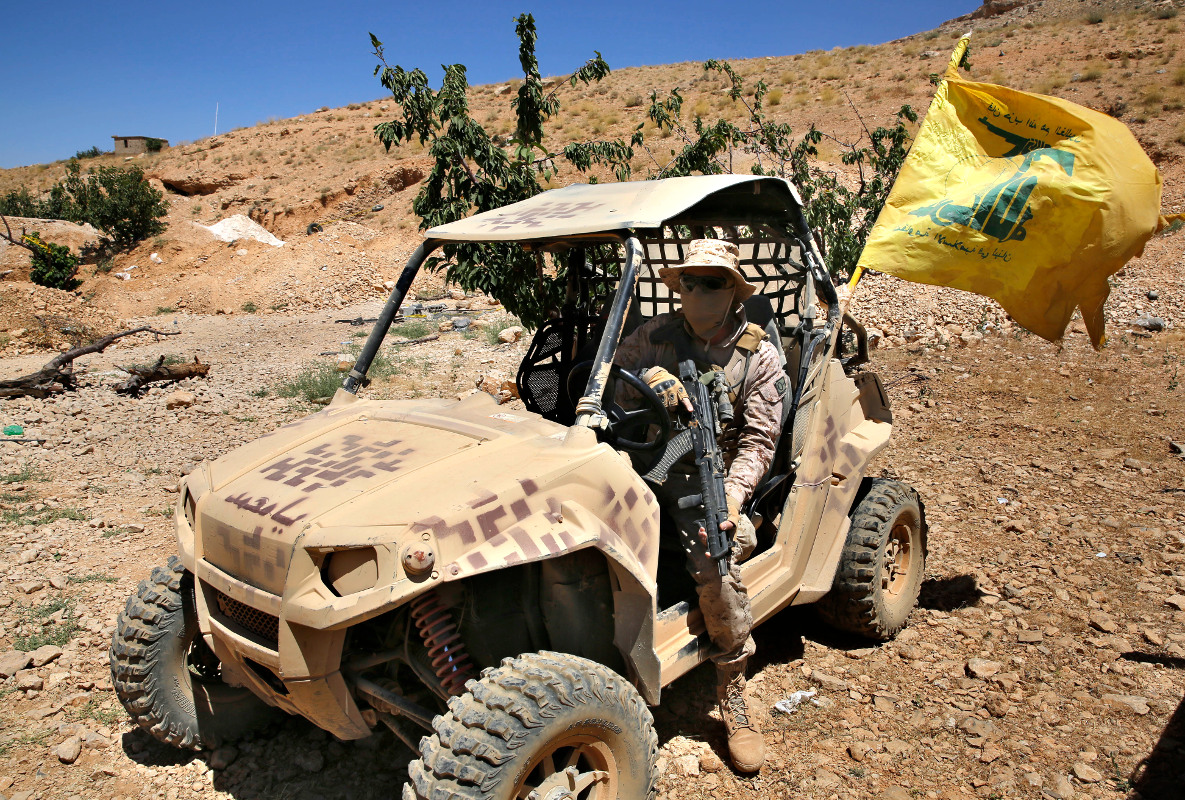
What comes next in Syria
“Iran, which wishes to establish a foothold on our border, is flooding the area with lethal arms and an ideology which is no less lethal,” Israeli Army Major General Herzl Halevi, the present head of the IDF’s military intelligence arm, said during a memorial ceremony after the reported Syria strike, though he declined to speak directly about the attack. “The IDF is working to keep the war back, and prepare for it.”
While the United States continues to say that it wants to stay out of the broader conflict brewing in the region, Israel seems consistent in its opposition to expanding Iranian influence and Tehran’s apparent desire for a stable, over-land route between its territory and Syria, by way of Iraq. With the Israelis apparently able to act as spoilers in any potential final settlement, it remains to be seen how well the U.S. government will be able to avoid the larger implications of the fighting as time goes on.
“As far as Syria is concerned, we have very little to do with Syria other than killing ISIS,” President Trump insisted on Sept. 7, 2017 during a shared press conference with Kuwaiti Emir Sabah al-Ahmed al-Jaber al-Sabah. “What we do is we kill ISIS, and we have succeeded in that respect.”
However, it seems like the United States is only getting closer to having to make a decision about whether or not this holds true even after the terrorist group ceases to be a significant threat.
Contact the author: joe@thedrive.com
